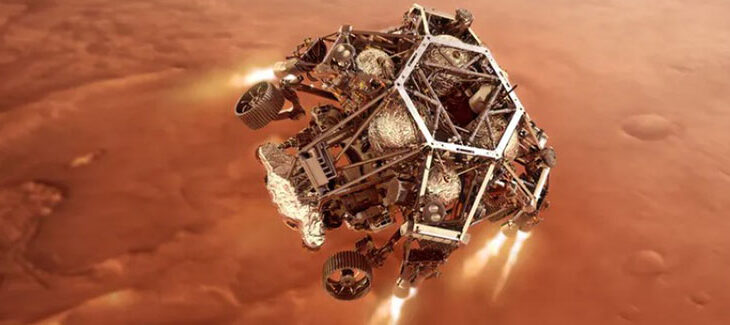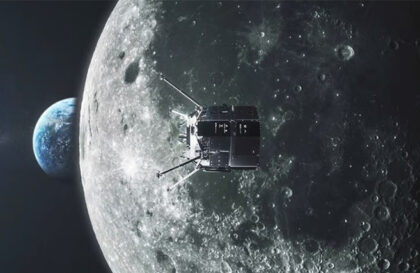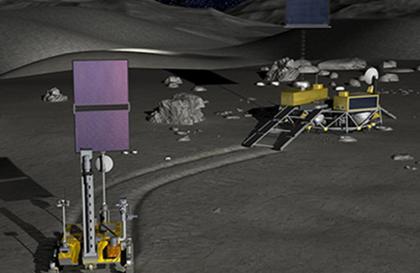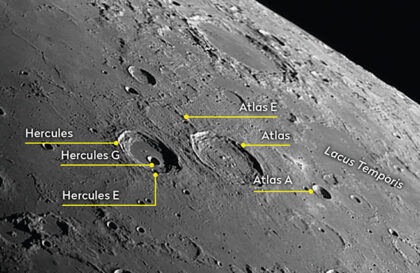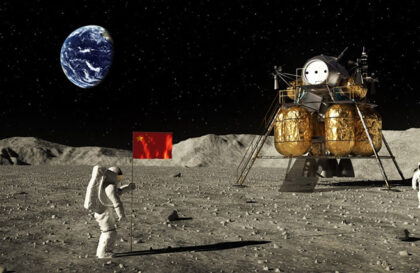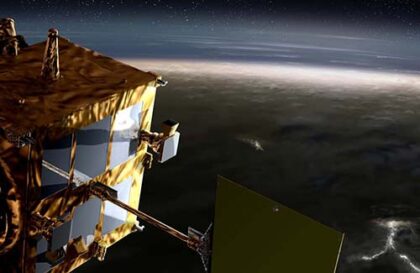Humanity has always been interested in Mars. Today, rovers and even a helicopter operate on the surface of Mars. Its practical study with help began in the 60s.
Here is a brief overview of currently operating automatic interplanetary stations (AIS) in the USA, Europe, India, China, and the UAE.
American probe “Mars Odyssey”
Credit: NASA
Mars Odyssey is the oldest probe in orbit around Mars, operating since 2001. It was a relay for the Spirit, Opportunity, and Curiosity rovers and helped find water ice on Mars using the Russian HEND instrument. The probe also examined the chemical composition of Martian soil, providing global maps of the distribution of chemical elements and minerals, and determined radiation risks for future missions to Mars.
“Mars Express”
After Mars Odyssey, the European Space Agency sent Mars Express, launched from Baikonur on a Russian Soyuz launch vehicle.
Credit: ESA/Alex Lutkus
Despite the failure of the Beagle 2 lander, the orbital unit has served scientists for nearly 20 years, providing valuable data. Mars Express took high-quality images of Mars, the global moon of Phobos, and photographed it from unusual angles.
Perspective view of triple martian crater. Credit: ESA/DLR/FU Berlin, CC BY-SA 3.0 IGO
Mars Reconnaissance Orbiter
The Mars Reconnaissance Orbiter (MRO) is known for its detailed images of Mars. Her photographs are of such high quality that many resemble earthly landscapes. MRO also photographed Comet McNaught. In more than 15 years of service, MRO has provided scientists with high-quality data about Mars, helping to study its terrain, geology, and ice and prepare for future missions, including selecting human landing sites.
The southern wall of the Koprat canyon in the equatorial canyon system of the Valles Marineris. Credit: NASA/JPL-Caltech/University of Arizona
The Hellespont has a large collection of sand dunes and other wind-formed formations that are constantly migrating. Credit: NASA/JPL-Caltech/University of Arizona
This beautiful observation shows a gorgeous pattern of dust devil tracks. Credit: NASA/JPL-Caltech/University of Arizona
Mars Orbiter Mission, MOM, Mangalyaan
In 2013, India launched its Mangalyaan spacecraft, becoming the first country to reach Mars on its first attempt successfully. It is also Asia’s first Mars lander and its cost-effectiveness is astounding. His journey is cheaper than a motorcycle trip of the same length.
Mars Orbiter Mission spacecraft around Mars (illustration) Credit: Wikipedia.
Mangalyaan took many photographs of Mars, including unique images that showed the entire disk of the planet and the satellite Deimos. Unfortunately, in 2022, communication with the device was lost, and the mission was completed. However, her data continues to be valuable to researchers. This station was the only one capable of capturing the entire disk of the planet in a frame.
Phobos, one of the two natural satellites of Mars, silhouetted against the Martian surface. Credit: ISRO
Mars Atmosphere and Volatile EvolutioN
NASA launched MAVEN at about the same time India launched its Mangalyaan, but the device cost six times more. MAVEN provided valuable information about Mars: it showed that Mars is losing its atmosphere due to the solar wind’s influence. Also, thanks to him, we learned about auroras on Mars. MAVEN studied the comet and its interaction with Mars and even detected metal ions in the Martian atmosphere, which is rare for other planets.
This image shows an artist concept of NASA’s Mars Atmosphere and Volatile EvolutioN (MAVEN) mission. Credit: NASA’s Goddard Space Flight Center
ExoMars
The European Space Agency, in collaboration with the Space Research Institute of the Russian Academy of Sciences, launched the ExoMars project.
Credit: ESA/ATG medialab
One of its parts is the Trace Gas Orbiter (TGO, or Trace Gas Orbiter), which studies methane in the Martian atmosphere. This gas may indicate activity on the planet. Despite the loss of the Shchlakovsky lander, TGO is successfully studying the atmosphere of Mars, its geology, and possible traces of life.
The ExoMars program includes two critical missions: the Trace Gas Orbiter, launched in 2016, and the Rosalind Franklin rover mission, scheduled for launch in 2028. The main goal of both is to determine whether there was life on Mars in the past.
A portion of the first image captured by the Trace Gas Orbiter from its new science orbit on April 15, 2018. This view shows a stretch of Korolev Crater in the Red Planet’s far north. Credit: ESA/Roscosmos/CaSSIS)
Arab “Al-Amal” and Chinese “Tianwen-1”
In February 2021, the Arab station Al-Amal and the Chinese Tianwen-1 reached the orbit of Mars within one day of each other. Al-Amal, launched on a Japanese rocket, discovered a new type of aurora on Mars.
This June 1, 2020 illustration provided by Mohammed Bin Rashid Space Centre depicts the United Arab Emirates’ Hope Mars probe. Credit: Alexander McNabb/MBRSC via AP.
While Tianwen-1 is mapping the planet, displaying the tracks of its Zhurong rover and other details of Mars.
A ‘selfie’ taken by China’s Zhurong Mars rover during the Tianwen-1 mission. Credit: China News Service.
Banner image: NASA-JPL-CALTECH/TT-AP
Image credit:
https://www.hbl.fi
https://astrobiology.nasa.gov
https://www.esa.int
https://www.esa.int
https://mars.nasa.gov /
https://mars.nasa.gov/
https://en.wikipedia.org
https://www.universetoday.com
https://www.nasa.gov
https://www.esa.int
https://www.space.com
https://www.timesofisrael.com/
https://www.space.com
